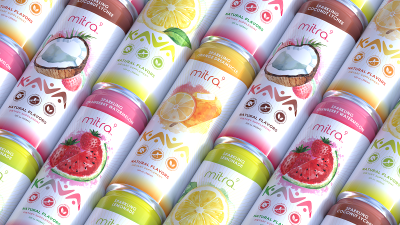[Video] Beverage startup tips: Why going small, focusing locally to start can boost success
Cascadia Managing Brands has consulted beverage brands like Liquid Death, Evian, Hint, Naked Juice, and others on sales management, brand development, and more. For those brands just starting, Sipper suggested learning your brand in and out, testing in local markets and gathering consumer feedback.
“I think the right strategy is to go small. Do a test batch, do a small amount, even if it costs more per unit. Get a feel for your brand, [and] how hard is it to produce,” Sipper said. “You come up with a recipe in your kitchen, and then you've got to transfer it into a huge production facility. It's not always the same. So, you need some advice on that.”
Growing a brand through merchandising, promoting wisely
After securing even a small retail distribution footprint, beverage companies need to focus on merchandising, which “is something that most companies just overlook,” Sipper said. Where and how a product is presented can play a huge role in the brand finding success once they’ve finally made it to retail shelves, he added.
“If you want to be successful, you've got to start at the eye level shelf or between the eye level and the thigh level. If you put a brand-new product ... [on] the bottom shelf, no one's going to see it. So, merchandising is really important. Figure out which flavors you want the consumer to see first, which one second, which one third. What if they come from the other angle of the aisle?”
Beverage brands also need to approach promotions carefully, Sipper noted. If promotions are too frequent, consumers might become accustomed to that price point and never want to pay the full price, he said. However, many retailers often demand promotions to keep the product on the shelf, he added.
“There are obligations that retailers have that say ‘Hey, we want you to promote once a quarter.’ They'll say, ‘Hey, I think the right price is x,’ and then you try and achieve that because [there are] two parts to the promotion. One is keeping the buyer happy, so they continue with the product, and the other is attracting the new consumer. I mean it's all about availability, trial, and awareness."
From social media to DTC: What brands should consider
When it comes to social and digital media efforts, Sipper cautioned against simply creating social media posts for the sake of creating them and instead focusing on ways to reach consumers more locally.
“You find out where you're selling and try to geo-target the ads. So, you may be spending an extra couple of dollars per ad per click, but you're getting the right consumer, you're getting the right zip code, the whole nine yards. We'd like to go two miles outside of the store, and then we pick the demographic that meets our criteria, depending on the brand.”
Sipper also noted that it’s important to link a direct-to-consumer (DTC) offering back to a broader strategy and understand the pros and cons of the cost of doing DTC.
"I think [DTC] does have a role in the future, but I think your product needs to be special. It needs to be something that people look at, and they say, 'Oh my God, that's a great product... I'll pay extra for that on Amazon or on somebody's website,'" Sipper said. "It's really hard for a beverage to make money on [DTC]. But is it a good marketing program? [Do] you sell it under cost just to get it in people's hands and get people trying? Possibly, but that has to be just a part of a bigger strategy. It can't be the only strategy."
![[Podcast] Founders’ Fundamentals: Iced tea vet Seth Goldman discusses brand-building basics](/var/wrbm_gb_food_pharma/storage/images/_aliases/wrbm_medium/publications/food-beverage-nutrition/foodnavigator-usa.com/article/2024/06/12/podcast-founders-fundamentals-iced-tea-vet-seth-goldman-discusses-brand-building-basics/17497459-10-eng-GB/Podcast-Founders-Fundamentals-Iced-tea-vet-Seth-Goldman-discusses-brand-building-basics.jpg)








